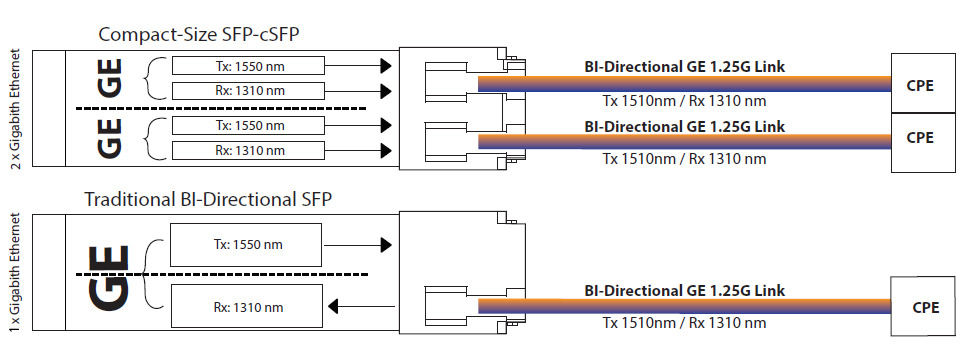FTTx using WDM
FTTx today is commonly build as either Passive Optical Network (PON) or Active Ethernet (P2P) – both approaches apply WDM technology. Most popular solution, especially in the Nordics today, is active ethernet using WDM transceivers, also known as Bidirectional.
Normally a connection between two points, requires a signal going each way which means that one connection requires two individual fiber strands. By applying WDM in a bidirectional transceiver, we can send a signal in both directions in one single strand of fiber.
The main advantage that this brings is the demand of fiber in the ground is cut in half and still allowing each customer to run on a dedicated line.
Moving with the stream
When you make a bidirectional connection, you have two use two types in order make a connection; an A-side and a B-side. This is also referred to as upstream (BX-U) and downstream (BX-D).
The BX-U is traditionally a cheaper laser than the BX-D laser and for that reason it is commonly used in the CPE, in order to keep the cost down for the CPE manufacturer.
Today we see that 1.25Gb/s transceivers is the most common solution, since it enables the ISP to offer any speed from 100Mbit and up to a Gigabit connection, without any change in hardware.
Higher density
In recent years there has been deployed fiber connections to a lot of homes in Europe, especially in the Nordic countries. This is great for the customers but causes an issue for the service providers; space.
Often the node where the customers are connected are placed in tight spaces, like a small installation area in a basement or street cabinet.
With a CSFP you are basically running two bidirectionals in one SFP, which means that you will have two customers per port in your switch. This requires that the switch can support CSFP, but this feature is becoming more common in the market. Not only does this save space, but also the number of switches.



